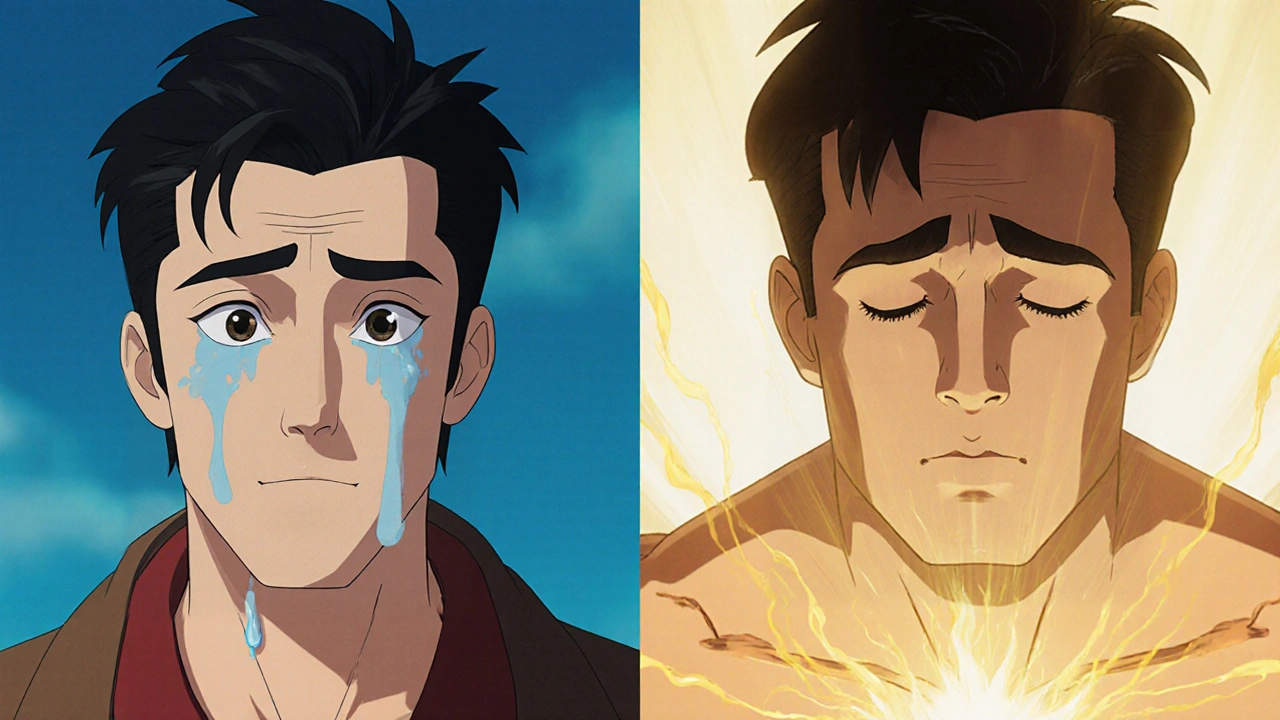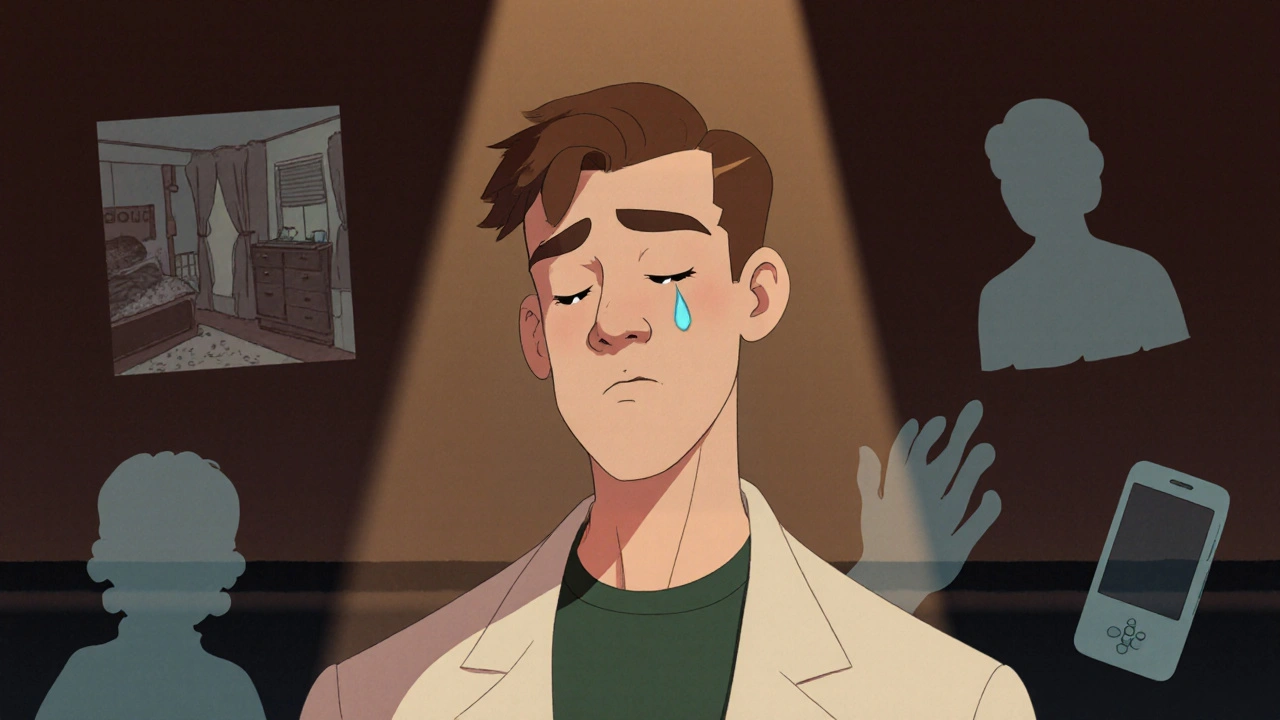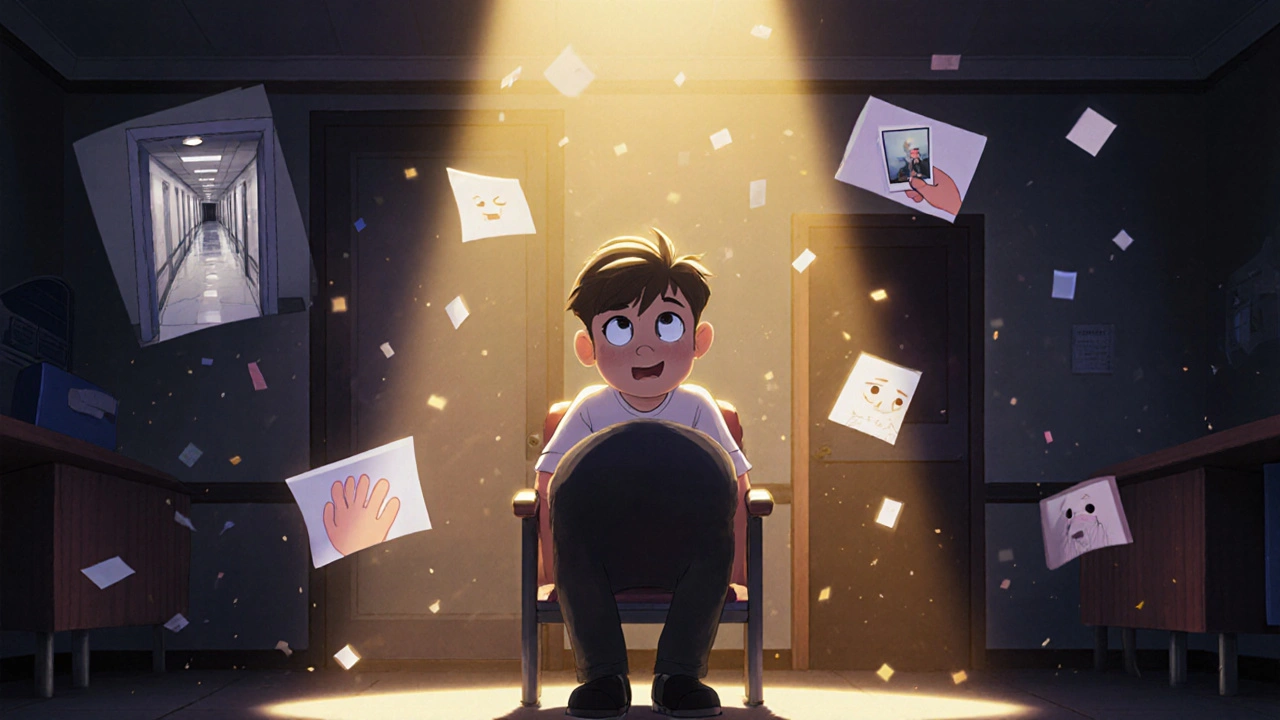Why Crying on Cue Isn’t Just About Tears
Most people think crying on cue means squeezing out tears when the camera rolls. But if that’s all you’re doing, you’re already behind. Casting directors aren’t looking for wet eyes-they’re looking for emotional truth. A tear without grief is just moisture. And audiences, even if they can’t explain why, know the difference.
Think about the last time you saw someone cry on screen and felt it in your chest. That wasn’t luck. It was technique. Behind every authentic sob is a carefully built emotional pathway-something trained, not accidental. The best actors don’t just cry. They become the pain. And that’s not something you can fake with menthol drops or bright lights.
The Three Types of Tears (And Why Only One Matters)
Your eyes make three kinds of tears. Basal tears keep your eyes lubricated-about 2-3 microliters per minute. Reflex tears come from chopping onions or smoke-up to 30 microliters. But emotional tears? Those are different. They contain 24% more protein, including prolactin, a hormone tied to stress and bonding. That’s not just water. That’s your body’s biological response to grief, fear, or love.
Here’s the catch: you can’t trigger emotional tears by rubbing your eyes or yawning hard. Those tricks might make your eyes water, but they don’t activate the limbic system-the part of your brain that processes real emotion. Without that, your face stays flat. Your brow doesn’t lower. Your lips don’t tremble. Your eyes don’t go soft. And that’s what casting directors spot in under two seconds.
Method Acting vs. Physical Tricks: The Real Divide
There are two main ways actors produce tears: emotionally or mechanically. One is art. The other is a workaround.
Method Acting, rooted in Stanislavski and expanded by Lee Strasberg, asks actors to dig into their own memories. A scene about losing a parent? The actor doesn’t imagine it-they recall their own mother’s funeral. The smell of the hospital hallway. The weight of the silence after the doctor spoke. That memory doesn’t just bring tears-it brings the whole body’s reaction: the tight throat, the shaky breath, the way your hands curl into fists.
But here’s the cost: emotional exhaustion. One actor told me after using her father’s death memory for a scene, she couldn’t speak for three days. That’s not sustainable for a 15-take shoot.
On the other side are physical tricks: yawning, staring at bright lights, menthol eye drops. These work 92% of the time to make eyes water. But casting directors rate them at just 28% for authenticity. Why? Because the face doesn’t move with the tears. The eyes don’t glaze. The mouth doesn’t quiver. It looks like someone’s about to sneeze, not grieve.

The Anatomy of a Real Cry
Authentic crying isn’t just about the eyes. It’s about the whole face. Dr. Paul Ekman’s research found that real grief triggers 17 specific muscle movements. One of them? The grief head tilt-when the head lowers slightly, 15-20 degrees, like the body is collapsing under weight. Another is the subtle tightening of the orbicularis oculi muscle around the eyes, making them squint slightly as tears form.
Fake crying? It activates only 8-10 muscles, and they’re inconsistent. The forehead stays smooth. The jaw doesn’t tense. The eyes water, but the rest of the face is neutral. That’s why Netflix and major studios now have guidelines banning “forced crying.” They don’t want actors who cry-they want actors who feel.
One Oscar-winning performance, Halle Berry in Ghost of Mississippi, didn’t rely on memory alone. She replaced her character’s trauma with her own childhood experience of racism. Not the tears. The weight. That’s what made the scene unforgettable.
How to Do It Without Burning Out
If you’re an actor trying to cry on cue, you need a system-not a gimmick. Here’s what works in real auditions and on set:
- Prepare your body-5 minutes of diaphragmatic breathing drops your heart rate from 110 to 72 bpm. Calm nerves mean your body can respond, not shut down.
- Use the “magic if”-Ask: “What if this happened to me?” Not “What if I were this character?” That’s the trap. You’re not pretending. You’re remembering.
- Anchor with senses-What did the room smell like? What did the floor feel like under your shoes? Sound of the door closing? Three sensory details boost success by 37%.
- Time the tear-Real emotional tears take 3-5 seconds to rise. Don’t rush. Let the feeling build. The tear comes after the pain, not before.
Successful actors keep an emotional journal. Not just memories-they track which ones work, which ones fade, and how long it takes to recover after using them. Rotate them weekly. Don’t reuse the same trauma every time. That’s how you burn out.

The Hidden Cost of Crying on Cue
Most actors don’t talk about this. But after a heavy crying scene, you don’t just feel sad-you feel hollow. 89% of theater actors in NYC report needing 20-30 minutes to reset emotionally. Film actors report it too, but they have the luxury of breaks between takes. Stage actors? They have to do it again tonight. And again tomorrow.
And then there’s the “dry eye paradox.” Performance anxiety can shut down tear production entirely. No matter how deep the memory, if your body is in fight-or-flight mode, your lacrimal glands stay quiet. That’s why hydration matters: drink 500ml of water 90 minutes before a scene. Use preservative-free artificial tears 20 minutes before-just to keep your eyes ready, not to fake tears.
One Broadway actor told me he uses a “physiological sigh”-two quick inhales through the nose, then one long exhale-to reset his nervous system between scenes. It’s not magic. It’s biology.
What the Industry Really Wants Now
The days of forcing tears are ending. Casting Frontier’s 2022 survey showed 78% of casting directors reject “crocodile tears”-tears without emotional context. The term comes from an old myth that crocodiles weep while eating. Today, it’s used for actors who cry without the soul behind it.
Now, studios are shifting toward emotional implication. Writers are crafting scenes where grief is suggested, not demanded. A long silence. A hand on a photo. A deep breath before speaking. That’s harder to fake. And more powerful.
UCLA is even testing EEG headsets that measure limbic system activity to predict authentic tears. And a new product called “TearTech”-eye drops with purified emotional tear components-was banned by SAG-AFTRA because it bypasses emotion entirely. The industry is saying: we don’t want tears. We want truth.
Final Rule: Don’t Cry. Feel.
Crying on cue isn’t about technique. It’s about honesty. You can learn how to make your eyes water. But you can’t learn how to feel. That’s why the best actors don’t train to cry. They train to be vulnerable. To stay open. To remember what it felt like to lose something real.
When you’re ready, the tears come. Not because you want them to. But because you can’t stop them.

